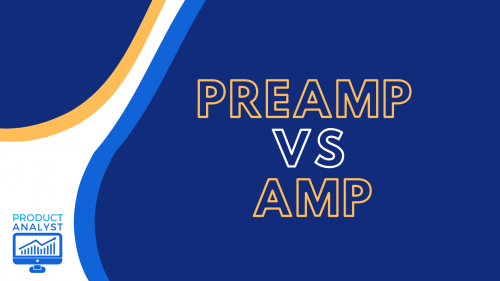
Guitarists should know the difference between a preamp and amp — they can be used to set up an audio studio, music room, or home theater system. If you’re confused about what these words mean, how they vary, and whether you require a preamp and amp for your home theater, keep reading. Our experts look at the difference between a preamp vs amp.
Preamp vs Amp
What is a Preamp?
For starters, a difference is the preamp is an electronic amplifier that can convert weak sound to a stronger one, which boosts the preamp output sufficiently to drive the speakers. A pre amp, unlike an audio receiver or a projector, is not a required piece of equipment. Consider it something that can provide you an extra boost.
Purposes of a Preamp
We’ll explore the purpose of a preamp in this section with more detail. Fundamentally speaking, a preamp’s primary purpose is to amplify low-level output signals to line level input. A line-level signal has a much higher voltage, resulting in a much louder volume.
This is the type of signal produced by electric guitars and keyboards, for example. Preamps are widely used in the music industry to level up the weak signal of a microphone and other acoustic instruments and match other digital devices.
When selecting a preamp, keep in mind that it must be compatible with your power amplifier. The instruments must have equal power levels to avoid interfering with one another or causing unwanted feedback or interference.
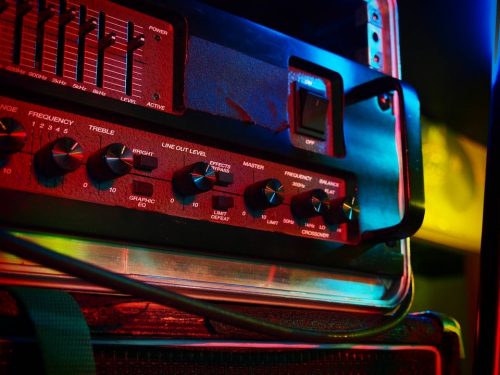
Pre-amps increase audio quality and thereby add value to an already working setup. A microphone, instruments, and other audio equipment can all be connected to units using an audio interface. Built-in preamplifiers are common on audio interfaces, and they typically perform excellently. You won’t need a separate preamp if your interface is of good quality.
Types of Preamp
There are five basic types of preamps: colored preamps, transparent preamps, tube preamps, solid-state preamps, and digital preamps.
Colored preamplifier add color, making your recordings sound intimate and aesthetically gorgeous. This preamp is designed to improve the overall sound stage of your audio signal. Our experts suggest using this if your signal is dry and thin. Colored preamps increase the amplitude of your signal while adding harmonic distortion. Use a colored preamp if you want a richer sound and timbre.
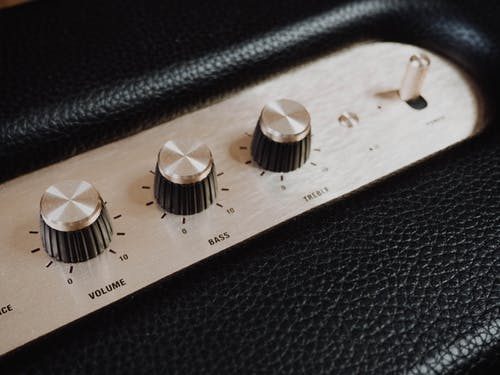
Transparent preamplifier is invisible to the ears. These preamps enhance the signal while maintaining the microphone’s original flavor, which might be dark, bright, or neutral. Many musicians and producers inclined to jazz and classical music prefer to use these preamps as it provides a transparent signal, and the sound is as “true” as it gets.
The tube preamp is another form of preamp. Our experts mentioned that these preamps use thermionic tubes (vacuum tubes) to produce gain, giving them a “soft” or “fat” tone. Due to the increased signal, tube preamplifier produce mild distortion, but they produce the “warmth” tone.
The next type of preamp on our list is called the solid-state preamps. They can tolerate higher gain levels without distorting. Thus, they provide more transparency when compared to a tube preamp.
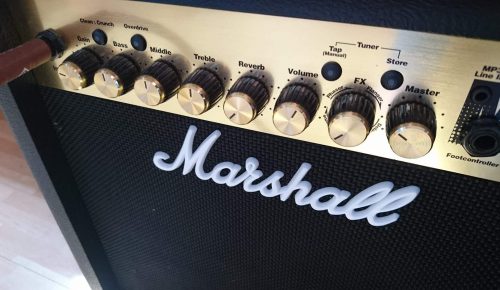
Solid-state preamplifier is best suited to instruments such as drums and acoustic guitars. They also tend to be cheaper tube amps but more affordable preamps often don’t sound great, which is why you must invest in this equipment if you want to get excellent audio quality.
To sum it all up, if you want to get your sound’s natural tone, getting a solid-state preamp is your best choice. However, solid-state preamps tend to emit unusual harmonics, resulting in a much less appealing pitch. That being said, solid-state preamps have more clarity and less coloration in their tone than tube preamps.
Last on our list are the more modern, digital preamplifier. These pre amps convert an analog signal to a digital signal. Another unique feature of this preamp is they add their sonic signature in the processing before the signal is transferred to a digital audio workstation (DAW). These preamps could technically be classified as audio interfaces because they transform an analog signal to a digital signal for use in a digital audio workstation (DAW).
What is an Amp or Power Amplifier?
An amp or power amplifier are units that convert low-voltage signals from your source equipment into a signal with sufficient gain to drive a pair of speakers. They are widely used to raise the amplitude of a signal in music instruments, electrical devices such as a television receiver and radio receivers, audio equipment, and computers. Amplifiers are not exclusive to home theaters as they can be used in any unit with an audio system. The strength of an amplifier, on the other hand, varies based on its function.

A power amplifier in an audio system boosts the strength of tiny electrical signals containing musical frequencies and amplitudes. When discussing power amps, this increases the power supply enough to drive speakers back and forth, causing air pressure variations, also known as waves.
Purposes of an Amp
A power amp has a lot of purposes. One of them is that it allows you to combine and pick different inputs and select the appropriate gain frequency. It also enables you to gather several signals before translating them into line-level signals.
The signal sent to the speakers is referred to as a line-level, as is the level at which all input signals must be. Amplifiers do the heavy work by adding gain to the signals so that they can be able to control two speakers. Simply put, an amplifier’s role is to enlarge or amplify a small electrical signal to line level. An effects loop essentially holds the amp’s overdrive intact.
Main Differences Between the Two
The main difference between both a preamp vs amp is that a preamp raises a weaker signal chain to line level, while an amplifier raises a line level signal [1] to speaker level.
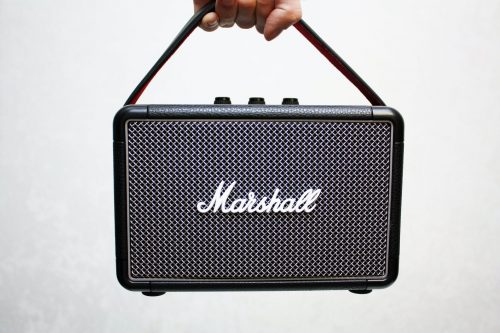
Another thing that differentiates both devices is power amplifiers amplify variable line signals from an input source. It enhances them to be played through speakers at full speed, while a preamp boosts a weaker signal chain (such as a microphone) before delivering it to the amplifier.
Another significant distinction between both units is that the preamp section uses audio compression to eliminate background noise and distortion, while power amplifiers do not. In a home theater system, however, a power amp is much more necessary.
A preamp section may be thought of as a more miniature amplifier, used to enhance a weak signal, while a power amp boosts the signal strength that the preamp previously enabled. It is not so much to eliminate distortion.
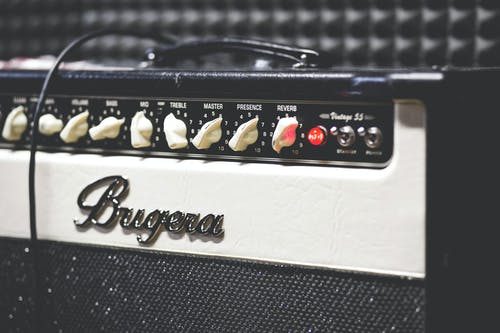
You’ll need an amp to get sound out of your guitar amp speakers, and you’ll also need a preamp to attach the guitar to the amp, so you’ll need two devices.. A preamp is the first device in the chain of this operation, as the name implies.
It’s important to remember when comparing a preamp and amp that one can exist without the other. In the case of a guitar amp, however, power amp and preamp are normally found on the same device.
Connecting a Preamp to a Power Amp
Connecting a preamp to a power amplifier is a quick method. Connect the XLR cable to one of the pre-amplifier outputs and the amplifier’s corresponding input (usually marked with letters). However, if one of your devices does not accept XLR cables, you should use RCA cables and follow these instructions:
- Examine the devices and cables to ensure that it is compatible. If you’re unsure about compatibility, consult the equipment’s user manuals.
- In their specified plug-ins, attach the power cords for the power amp and the pre-amplifier.
- Link one end of each connector cable to the back of the preamplifier’s output connectors. The letters on the sockets correspond to the power amp’s plugs on the back.
- Connect the other end of each cable to the back of the matching input plug holes on the amplifier.
- Lastly, connect the source device to the input plug-ins of the pre-amplifier and the speaker to the amplifier’s output plug-ins.
FAQ
Do you need a preamp and power amp?
Yes, you need a preamp and power amp if you want to have complete control over the contents of your device. Preamp is a great second step for improving quality sound quality or obtaining more sound variety. You can make excellent recordings using only the internal preamps of your audio interface and one or a high-quality condenser microphone.
Can I use an amp as a preamp?
No, you cannot use a power amp as a preamp. Since a preamp doesn’t have the same amount of power as an amp, it won’t raise the line signal enough to be heard over the speaker. A preamp does nothing more than improving a weak signal, while an amplifier can do much more.
What is the difference between an amplifier and preamplifier?
The difference between an amplifier and a preamplifier are the roles they do. An amplifier amplifies a sound before being played by the speaker. On the other hand, a preamplifier increases the level of a microphone signal to be strengthened.
Conclusion
If you have multiple input devices, getting a receiver makes much more sense, but an amp or preamp might be the better option if you want a more customized home theater speaker system.
We hope that our experts have clarified the confusion between power amp vs preamp — the variations, the difference, whether a preamp can be used as an amp, and why an amp is much more important than a preamp.
The post Preamp vs Amp — What are Their Differences? appeared first on The Product Analyst.
from The Product Analyst https://theproductanalyst.com/preamp-vs-amp/
No comments:
Post a Comment